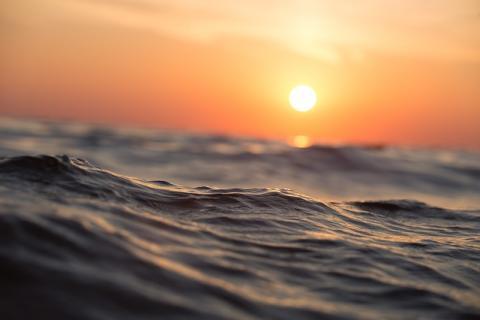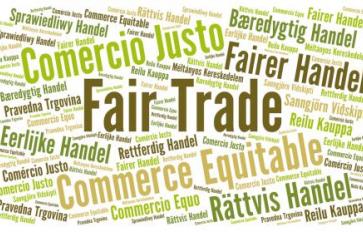
Many people take water for granted: Either they waste it or they simply don't appreciate it. But here's the thing most people forget: There's only so much water on this earth, and we can't make any more of it. Sure, there's a lot of water on earth, but did you know that 96.5 percent of it is too salty for human consumption? Not to mention two thirds of the remainder (freshwater) is locked in polar ice, permanent snow, and glaciers. And no, melting it won't help: Most of it will just end up as seawater. So what are we to do? I say, appreciate what we have while we have it. Here are 5 ways to protect our water supply, and the life that needs it (including you and me - not just sea life) to flourish.
Avoid dish soaps filled with toxins
Dumping toxins down the drain only further pollutes our water supply. That's why it's so important to make sure you're washing the dishes with an eco-friendly, all-natural soap. Make sure to read the label on your soap and avoid buying from brands with harmful chemicals. Some toxins to specifically watch out for are sodium laureth sulfate, triclosan, ammonia, bleach, and methylisothiazolinone. General rule of thumb? If you can't pronounce the ingredient, don't trust it (and even if you can, beware). To ensure your soap isn't harmful to the environment (or you), check out Environmental Working Group's list of recommended soaps. Personally, I love using Dr. Bronner’s castile soap, which comes in a wide array of scents such as peppermint and lavender. However, feel free to choose any of the soaps EWG recommends (just as long as the product receives an A rating).
Go meatless twice a week
Did you know a pound of beef takes 1,850 gallons of water to produce? Compare this to a pound of veggies, which only takes about 39 gallons to produce. That's why it's so important to go meatless (at least once or twice a week). Going meatless once a week will cut your water footprint by 16 percent! Not sure how to start? Try making a smoothie bowl in the morning, a peanut butter jelly sandwich for lunch, and a veggie stir-fry for dinner. Want more ideas? Just do a quick search on Pinterest by typing in "vegetarian recipes" and you'll find loads of inspiration. If you're feeling extra courageous or adventurous, try eating some vegan food! One of my favorite vegan food bloggers makes trying vegan dishes super simple by providing a bunch of recipes. Check out some of her vegan recipes here.
Eat sustainable seafood
It's so important to make sure you're buying and eating sustainable seafood. Why? Because of overfishing, that's why. Not to mention farmed fish (especially salmon), don't have the same nutritional benefits as wild caught. That said, there are a lot of other things to take into consideration when buying seafood -- everything from location, to catching methods, to how the fish's habitat needs to be accounted for. But no worries: there are nonprofit organizations that do the work for you. I like to use buying guides like Monterey Bay Aquarium's Seafood Watch and NOAA's FishWatch to make sure I'm on the right track. What I like best about them is that they not only offer an app to make sustainable seafood eating easier than ever, but they also create free printable guides. No matter where you live, this makes it super easy to find sustainable seafood: Just choose your state (or one you're traveling to), and it'll show you your best sustainable seafood choices, good alternatives, and what to avoid. Not sure how to use the guide? Just ask the restaurant if they offer the best choice fish of your choice. If not, settle for one of their recommended good alternatives. They also offer a database filled with their partners: In other words, you can look up restaurants and businesses that support sustainable seafood and ocean conservation. Take a look for yourself and search your state: You might be surprised at what you find!








